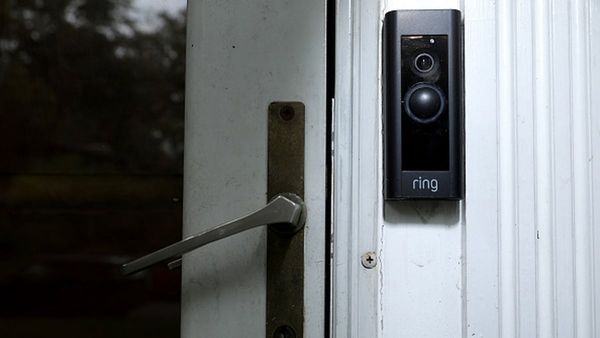
Your 2026 paycheck may be about to get a boost: New and increased tax breaks from the 2025 Trump/GOP spending bill could allow millions of workers to increase their monthly take-home pay next year.
How? Well, you’ll have to update your federal tax withholding.
Your withholding is the amount your employer takes out of each paycheck to pay taxes on your behalf. It’s typically a form you fill out when you start a new job, but the IRS recommends reviewing your W-4 Form annually to avoid costly mistakes.
For example, if you qualify for a new federal tax deduction, waiting until year-end to claim that tax break could lead to missing out on monthly savings, potentially giving the government an interest-free loan of your money until tax time.
So if you want to keep more of your take-home pay as you receive it in 2026, here are three critical tax changes that could boost your paycheck — if you qualify and update your Form W-4, that is.
Key tax changes to boost pay in 2026
To find the three critical tax changes for 2026 paychecks, Kiplinger considered tax breaks the IRS will soon add to its Tax Withholding Estimator that could affect workers.
- Taxpayers may use the estimator tool to help calculate federal tax withholding.
- This information can then be utilized to help fill out IRS Form W-4, Employee’s Withholding Certificate, with your employer.
- Only tax deductions with annual estimated savings above $1,000 qualified as “critical.” Estimated tax savings were referenced from the Tax Policy Center and The Tax Foundation, the latter of which sourced data originally published by the U.S. Census Bureau.
While Kiplinger notes estimates of how much you could save with these tax breaks, any actual tax savings may depend on several factors, like your filing status, applicable restrictions, and federal income tax bracket in 2026.
That said, here are three critical tax break changes that could boost your paycheck in 2026.

1. Tip income tax deduction in 2026
Tax deduction amount in 2026 (maximum): $25,000
Average estimated tax savings in 2026: $1,400
The new tip income deduction is a temporary tax break for tax years 2025 through 2028.
Although the deduction can be as high as $25,000 per tax return, the Tax Policy Center projects an average benefit of approximately $1,400 for each eligible household in 2026. That’s over $100 per month in tax savings, if you qualify and update your withholding.
Here are a few fast facts about the federal tipped pay tax deduction:
- Only “Qualified” tips are eligible, including voluntary cash and charged tips (like credit card or PayPal).
- Payroll taxes still apply (that is, the deduction doesn’t reduce Social Security or Medicare taxes).
- Your tip deduction starts to be reduced if you’re a single-filer with a modified adjusted gross income (MAGI) of $150,000 or more (married filing joint filers have a MAGI limit of $300,000 or more).
For every $1,000 your MAGI exceeds the above limits, your tip income deduction is diminished by $100. The deduction is completely phased out for single filers with $400,000 in MAGI and joint filers with MAGI of $550,000.
Plus, only certain professions qualify. The list of qualifying professions from the Treasury/IRS currently includes:
- Wait staff and bartenders.
- Food servers, chefs, and cooks.
- Dancers, musicians, singers, and digital content creators.
- Housekeeper cleaners and resort desk clerks.
- Home plumbers, electricians, and landscapers.
- Private event planners, pet caretakers, and tutors.
- Hairstylists, Tailors, makeup artists, and pedicurists.
While the IRS hasn’t released a final 2026 W-4 Form, you can start thinking about your withholdings with the draft version released late last month.
However, you’ll need to know an estimate of your qualified tip income for 2026 to plan how this federal tax break may affect your withholding. You can start by using your reported tips on last year’s tax return as a baseline and then project your qualified tips for 2026.

2. Overtime tax deduction for 2026 paychecks
Tax deduction amount in 2026 (maximum): $25,000
Average estimated tax savings in 2026: $1,400
Similar to the tax deduction for qualified tip income, qualifying non-exempt employees may be eligible to claim an overtime pay deduction from tax years 2025 through 2028.
The overtime deduction is worth up to $12,500 for single filers and $25,000 for joint filers, which the Tax Policy Center estimates could average about $1,400 per qualifying household next year.
Here are a few fast facts about the federal overtime pay tax deduction:
- You must work more than 40 hours per week.
- You must be a non-exempt employee who earns overtime under the federal Fair Labor Standards Act (FLSA).
- Single filers with more than $150,000 in MAGI will see their deduction reduced, while married filing joint couples won’t see a phase-out begin until their MAGI exceeds $300,000.
The overtime deduction is reduced by $100 for every $1,000 MAGI over the thresholds. When single filers have MAGI of $275,000 or more (and married filing jointly couples with $550,000 or more), the overtime deduction is completely phased out.
Like the tip income deduction, you can start thinking about adjusting your tax withholding for how much overtime pay you expect to receive in 2026. Begin with your 2025 overtime pay as a starting point. If you're unsure of this amount, consult your employer or refer to your pay stubs.
But keep in mind the overtime deduction only applies to the “extra” half of your time-and-a-half rate, not total overtime wages. That means your regular hourly rate is subtracted from your overtime rate when determining the deduction.

3. SALT deduction for 2026 withholding
Tax deduction amount in 2026 (maximum): $40,400
Average estimated tax savings in 2026: $4,722 to $14,974
The unlimited state and local tax (SALT) deduction was capped at $10,000 seven years ago by the Tax Cuts and Jobs Act (TCJA).
In 2025, the GOP tax bill temporarily raised the SALT deduction cap for certain taxpayers. This cap is projected to rise by 1% in 2026, increasing from $40,000 to $40,400.
Here are a few fast facts about the SALT tax deduction cap:
- Itemizing taxpayers could save up to $40,400 on federal taxable income in the 2026 tax year (returns normally filed in 2027).
- However, single filers in tax year 2026 will be subject to a phase-out of the SALT deduction when MAGI reaches $505,000 or more ($252,500 if married filing separately).
- For every dollar your income surpasses the above thresholds, your SALT deduction cap will be reduced by 30 cents.
- Your SALT cap will return to the original $10,000 limit once your income no longer qualifies for the deduction.
Claiming the SALT deduction largely depends on whether you itemize deductions on your return and how much state and local taxes you pay. So, individual tax savings may vary widely.
For example, the Tax Foundation estimates the average SALT paid per capita is between $4,722 and $14,974 annually. If you’re on the low end of that spectrum, you likely won’t see any benefit from this raised deduction cap, but if you’re on the high end, a higher SALT cap could make it worth the effort to update your federal withholding.
But beware if you’re in the highest tax bracket. That’s because those in the top 37% federal bracket for 2026 will be subject to a 35% rule on itemized deductions. This rule caps each itemized dollar to 35 cents worth of tax benefits (rather than 37 cents). Thus, if you’re a high-income earner, the 35% rule may limit the amount of estimated SALT deduction you should enter on your W-4 Form for 2026.
New federal tax withholding in 2026
While we covered three major 2025 tax breaks that could boost your monthly paycheck in 2026, the IRS will update its estimator tool with several other key tax breaks that may affect your work withholding to a lesser degree.
- The car loan interest deduction. Worth up to $10,000 on qualifying new vehicles, some suggest the estimated annual tax savings could average around $400 to $500 per taxpayer in 2026.
- The bonus deduction for those aged 65 or older. Worth up to $6,000 for eligible individuals with less than a certain income, the Tax Policy Center estimates that about half of eligible older adults will see some benefit.
The IRS is expected to release a final version of the 2026 W-4 Form by the end of December. So if you’re thinking about claiming these or other federal tax breaks on your withholding, wait until the finalized version is published to submit a new or updated form to your employer.
Also, it’s important to remember that not all tax savings may apply to you, and restrictions or certain limitations may apply to these and other tax deductions.
Double-check that you are fully eligible for the amount you claim on your Form W-4 before entering the deduction amount on your tax withholding. Otherwise, you could be in for a rude awakening at year's end with a hefty tax bill, fees, and even penalties.
The IRS Estimator may also be a helpful tax planning tool for other IRS withholding forms, like the Form W-4P (for retirees) and Form 1040-ES (for quarterly estimated tax payments). The estimator tool does not account for state income tax, so consult your tax professional for guidance on your specific tax circumstances if necessary.







